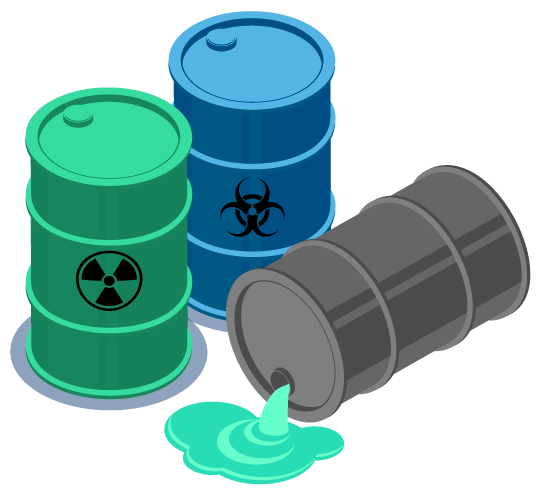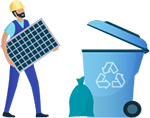Waste disposal is more complicated than ever before. With all different types of waste and rising pressures to do as little damage to the environment as possible and abide by legislation regarding what can be disposed of, where, how and by whom, it can be difficult to classify and dispose of.
Liquid waste can be any waste product in liquid form. While it may seem a simple matter of just flushing them away, literally, most forms of liquid waste can be damaging in some way. Be this damaging to pipelines and sewers, damaging to the environment or damaging to our health and well being.
Let’s run through some common examples of liquid waste.

What is liquid waste?
Chemicals
The term “chemical” covers a range of substances. Pesticides and treatments for timber, as well as household products such as bleach or oven cleaner, can be extremely damaging to the environment and to human health and are usually labelled as hazardous. Any waste should be disposed of appropriately.
Oils
Oils can include fats and greases from cooking (the giant vats in a chip shop, anyone?) which can produce blockages in sewers as well as be damaging to marine life. Other oils, such as fuel oils, are typically labelled as hazardous and disposal of which is subject to legislation. Failure to dispose of these oils properly can incur penalties.
Detergents
Used for cleaning, both household and commercial detergents can be extremely detrimental to wildlife, especially marine and aquatic life. Whilst we seldom think of this when doing the washing up at home, detergents used in a construction or commercial setting must be disposed of with due care by professionals.
Sanitary Waste
Sanitary waste includes sewage and water runoff from storms. It’s all liquid that passes into the sewer system. It can also include organic matter that gets caught up in flowing rainwater, such as leaves.
You may also like to read: How to classify waste
How is liquid waste disposed of?
Disposing of liquid waste, especially when it comes to commercial or construction waste, can be complicated and risky– both to your health and legally. The main ways that liquid waste can be disposed of are as follows:
Dewatering
As the name suggests, dewatering is the process of removing water from the waste and leaving only solids behind. This can only be done to waste that is deemed non-hazardous.
It is done by applying some force to the waste, by either pressing it so that the water is squeezed out or through centrifugal force so the water “spins” out – think the spin cycle on a washing machine! Both of these techniques require specialist equipment and training to do properly and safely.
Sedimentation
Sedimentation is the process of allowing solid waste that is suspended in liquid to settle into sludge. It’s the first step in sewage and storm water treatment. Any oils in the liquid float to the top and can be skimmed off.
Once the solids and liquids are separated, the liquid can be treated and recycled while the solid goes off to landfill. This is all done in huge tanks, to firstly guarantee safety but also efficiency.
Incineration
Incineration is reserved for the disposal of hazardous liquid waste and chemicals. The waste is burned twice, the second time at a much higher temperature, so ensure all of the waste is broken down.
Ash residue from this process is sent to landfill while the gas generated is released into the environment.
You may also like to read: What is solid waste disposal?
Why Choose Clear It Waste
All of these processes are quite involved and impractical, to say the least, for those not in the industry. It can be difficult to even know how to approach these streams, with the strict regulations on tip access. Instead, leave it to the professionals.
Here at Clear It Waste, we are experts in waste removal. Don’t just take our word for it, look at our reviews. We are also fully trained and certified to remove liquid waste efficiently and safely. You can rest assured the job will be done properly by us, as we are licensed, flexible to suit your needs and, of course, fully insured.
If you have any questions about your liquid waste removal needs, don’t hesitate to get in touch.

1.
Get in touch for your free, no-obligation quote.

2.
Book your collection online or with our friendly team.

3.
We collect your waste and leave your area clean and tidy.

